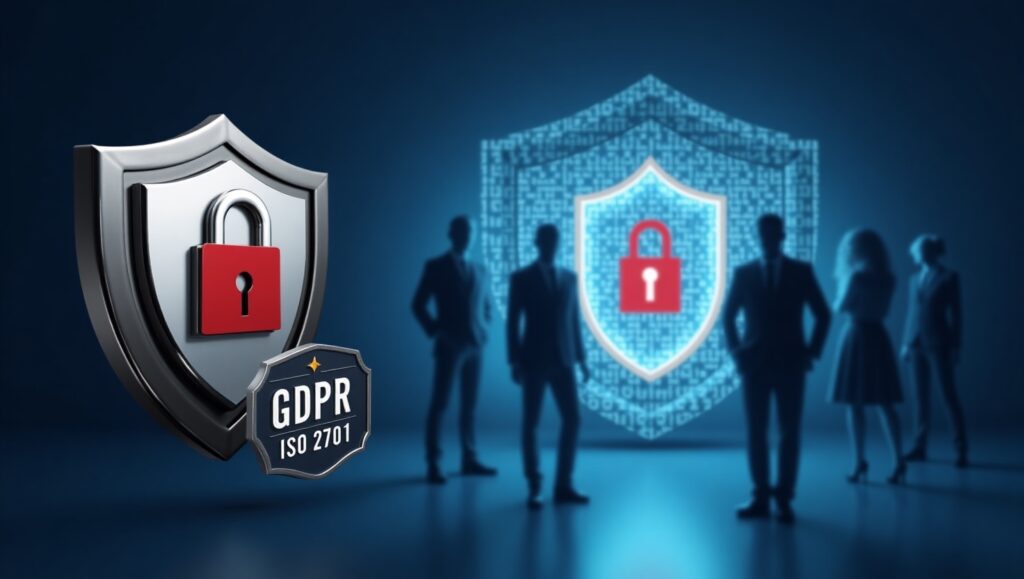Introduction – The Evolution of Customer Service Outsourcing
Picture this: A fast-growing e-commerce startup is drowning in customer inquiries. Their small team can’t keep up, and negative reviews start piling up. Then they discover customer service outsourcing—and within months, their support response time drops by 60%.
Table of Contents
This isn’t a rare success story. In fact, 70% of businesses now outsource customer service to stay competitive. But here’s the catch: 40% of them fail to optimize costs or quality. Why? Because outsourcing isn’t just about cutting expenses anymore—it’s a strategic tool to enhance customer experience (CX) while freeing up your team to innovate.
What is Customer Service Outsourcing?
Customer service outsourcing is partnering with a third-party provider to handle customer interactions—think phone support, live chat, or email management. But modern outsourcing goes beyond hiring cheap labor. Today, it’s about:
- Accessing global talent pools (like multilingual agents in the Philippines).
- Scaling operations overnight during holiday rushes or PR crises.
- Integrating AI tools (e.g., chatbots) with human agents for faster resolutions.

For example, companies like Zendesk and Salesforce now blend AI-enhanced customer service outsourcing with human empathy, creating a seamless “hybrid” model.
Why This Guide Matters
You’re probably wondering:
- “How do I outsource customer service without sacrificing quality?”
- “What hidden costs should I watch for?”
- “Which providers actually deliver ROI?”
We’ve dissected industry reports, analyzed top customer service outsourcing companies, and even uncovered risks competitors won’t warn you about (like reputation damage from poorly trained agents).
By the end of this guide, you’ll know:
Cost-saving hacks for startups and enterprises alike.
How to choose a provider that aligns with your brand’s voice (cultural alignment scores matter!).
Why hybrid customer service models (AI + humans) are the future.
Why Outsource? The Hidden Benefits Even Your Competitors Miss
Let’s cut to the chase: Yes, customer service outsourcing saves money. But if you think that’s the biggest perk, you’re missing the golden opportunities.
Imagine a D2C brand launching a viral product. Their in-house team is swamped, but instead of hiring 50 new agents, they tap into a 24/7 customer service outsourcing partner in Colombia. Suddenly, they’re handling 3x the inquiries—and their CX scores soar because agents speak fluent Spanish and English.

Here’s the twist: The real power of outsourcing isn’t just cutting costs. It’s about unlocking growth. Let’s break down why:
Benefit 1: Global Talent Pools = Better CX
Most companies outsource to save money. Smart companies do it to hire specialized talent they can’t find locally. For example:
- Multilingual support: Serve customers in their native language (think Tagalog in the Philippines or French in Morocco).
- Niche expertise: Find agents trained in healthcare compliance, SaaS troubleshooting, or fintech regulations.
A real-world win: A skincare startup outsourced to a team in South Africa and saw a 25% uptick in repeat buyers—because agents shared local beauty tips!
Benefit 2: Scale Overnight Without Hiring Headaches
Hiring in-house agents takes months. Outsourcing? You can ramp up in days.
- Seasonal surges: Handle Black Friday chaos or holiday returns effortlessly.
- Crisis mode: When a PR disaster hits (like a product recall), scale your support team instantly.
Pro tip: Look for providers offering hybrid AI + human models. Chatbots tackle simple queries, while agents focus on complex issues.
Benefit 3: Free Up Your Team to Innovate
This is the #1 benefit competitors ignore. Outsourcing routine tasks lets your core team:
- Build loyalty programs that boost customer lifetime value.
- Analyze data to predict trends (e.g., why 30% of returns come from sizing issues).
Example: A SaaS company outsourced basic ticket resolution and used freed-up time to launch a game-changing AI feature.
The Secret Weapon: Crisis-Proofing Your Business
COVID taught us all a lesson: Flexibility is survival. Outsourcing partners with geographically分散 teams keep your support running during:
- Natural disasters.
- Political unrest.
- Internet outages.

Fun fact: During a major server crash, a fintech brand leaned on their outsourced team in Romania to handle 90% of panicked customer calls—while their in-house team fixed the tech.
“But What About Quality Control?”
Fair question! The key is partnering with the right provider (we’ll teach you how in Section 4). For now, know this:
- Top vendors use tools like real-time QA dashboards to monitor interactions.
- You can demand agents trained in your brand voice (no robotic scripts!).
The Bottom Line
Outsourcing isn’t a cost-cutting trick—it’s a growth accelerator. Whether you’re a startup eyeing global markets or an enterprise battling seasonal spikes, customer service outsourcing lets you:
- Focus on innovation instead of firefighting.
- Turn support from a “cost center” into a customer retention engine.
How Taxi Firms & Security Companies Master Outsourcing
Let’s face it: Not all industries are created equal. While most guides talk about generic customer service outsourcing, they ignore the unique needs of businesses like taxi companies and security firms. Imagine a taxi app failing to resolve ride cancellations in real-time or a security company botching an emergency call—it’s not just bad CX; it’s a liability.
But here’s the good news: Outsourcing isn’t just for e-commerce or SaaS. Let’s explore how taxi firms and security companies are using outsourced support to save costs, boost efficiency, and still keep customers safe.
Taxi Firms: Speed and Scale Are Everything
Taxi and ride-hailing companies live in a real-time world. A missed call or delayed response can mean losing a customer to Uber or Lyft. Here’s how smart taxi firms outsource without hitting speed bumps:
- 24/7 Multilingual Support:
- Tourists in Paris need French-speaking agents. Business travelers in Dubai want Arabic support. Outsourcing hubs like Morocco or the Philippines deliver both, and cut costs by 30%.
- Example: A European taxi app outsourced nighttime support to Colombia, reducing after-hours response time from 10 minutes to 90 seconds.
- Crisis Management for Surge Pricing Chaos:
- When demand spikes (New Year’s Eve, festivals), outsourced teams scale instantly. No need to hire temporary staff.
- Pro tip: Pair outsourced agents with AI chatbots to auto-resolve simple queries like “Where’s my driver?”
- Integrate with Dispatch Systems:
- Top providers sync with tools like TaxiCaller or Autocab, letting agents access driver locations and ETAs in real-time.

Security Firms: Compliance Can’t Be Compromised
Security companies handle sensitive data—think alarm systems, surveillance footage, or emergency protocols. One slip-up could risk lives or lawsuits. Here’s how outsourcing works without cutting corners:
- HIPAA/GDPR-Compliant Agents:
- Need to discuss a client’s security breach? Outsourced agents in regions like Estonia or Canada are trained in data privacy laws.
- Case study: A U.S. security firm outsourced to a HIPAA-certified Philippine team, reducing compliance costs by 40%.
- Emergency Response Expertise:
- Outsourced agents can be trained to follow strict protocols (e.g., escalating urgent calls to on-site teams within 60 seconds).
- Red flag fix: Avoid vendors using generic scripts. Demand custom emergency workflows.
- Secure Tech Stack Integration:
- Ensure providers use encrypted channels (e.g., Slack Enterprise Grid, Zoho Desk) to share sensitive client details.
The Outsourcing Hack Both Industries Love
Hybrid human + AI models:
- Taxi firms use chatbots for booking confirmations and human agents for complex issues like refunds.
- Security companies deploy AI to log incident details automatically, freeing agents to handle high-stakes calls.
Real-world ROI: A security outsourcer in South Africa slashed average call time by 50% using AI voice assistants to verify caller identities.
“But What About Industry-Specific Risks?”
Glad you asked. Here’s how to dodge disasters:
- For taxi firms: Avoid providers with no ride-hailing experience. Demand agents trained on apps like Uber or Bolt.
- For security firms: Insist on background-checked agents and NDAs for all staff.
Your 5-Point Checklist for Outsourcing
- Do they have industry-specific case studies?
- Can they integrate with your tech tools (dispatch software, emergency systems)?
- Are agents trained in compliance standards (GDPR, HIPAA)?
- Do they offer 24/7 support with <2-minute response SLAs?
- Is their pricing transparent (no hidden fees for training or tech setup)?

How to Choose a Provider (Hint: It’s Not Just About Price!)
You wouldn’t hire a chef without tasting their food—so why pick a customer service outsourcing company without vetting their secret sauce? Spoiler: The cheapest vendor often costs you the most in the long run.
Let’s say a fintech startup chose a provider solely for their low rates. Six months later, they lost 20% of customers because agents mispronounced financial terms and sounded robotic. Ouch.
Here’s how to avoid their mistake and pick a partner that actually aligns with your goals.
Step 1: The Cultural Alignment Score – Your Secret Weapon
Forget vague promises about “brand fit.” Demand a Cultural Alignment Score—a metric grading how well agents understand your:
Tone of voice (Is your brand playful like Monzo or formal like JPMorgan?).
Industry jargon (e.g., “APR” for fintech, “PCI compliance” for e-commerce).
Customer empathy (Agents should mirror your values—think sustainability for eco-brands).
How it works:
Share past customer interactions or brand guidelines.
Providers simulate mock chats/calls.
You rate their alignment on a 1–10 scale.
Real-world win: A vegan skincare brand boosted customer retention by 35% after switching to a provider with a 9.2 Cultural Alignment Score. Agents shared the brand’s passion for sustainability, even recommending eco-friendly packaging!
Step 2: Security – Don’t Skip the Boring Stuff
A data breach can tank your reputation overnight. Here’s how to vet providers:
Certifications to demand:
ISO 27001: Gold standard for data security.
SOC 2: Ensures compliance with privacy laws like GDPR.
Niche certs: HIPAA for healthcare, PCI DSS for e-commerce.
Red flag: Providers who can’t share audit reports or use outdated tools like shared Google Sheets for sensitive data.
Pro tip: For security firms or healthcare outsourcing, ask if agents undergo annual background checks.
Step 3: Scalability That Doesn’t Sacrifice Quality
Your provider should scale like a rubber band—flexible but never snapping. Ask:
“Can you add 50 agents next week if we launch a new product?”
“Do you offer hybrid AI + human models to handle sudden spikes?”
Example: A travel startup outsourced to a Colombian provider who scaled from 10 to 200 agents during peak season—without dropping CSAT below 90%.
The Hidden Costs Competitors Won’t Warn You About
Low upfront rates often hide nasty surprises:
Training fees: 20–50 per agent.
Tech integration: Charging $1k+ to connect their CRM to your systems.
Contract exit fees: Up to 3 months’ revenue if you leave early.
Always ask: “What’s not included in your pricing?”
Your 5-Minute Vendor Checklist
Cultural Alignment Score ≥ 8/10.
Security certs matching your industry (e.g., HIPAA for healthcare).
Scalability proof: Case studies showing rapid team growth.
Transparent pricing: No hidden training/tech fees.
Post-sales support: Dedicated account managers, not chatbots.
Red Flags to Run From
☑️ Agents use generic scripts (e.g., “I understand your frustration” with zero personalization).
☑️ No industry-specific references (e.g., a taxi firm outsourcing to a provider with no Uber/Bolt experience).
☑️ They refuse to sign NDAs for confidential projects.
The Bottom Line
Choosing a customer service outsourcing company is like dating—compatibility matters more than looks (or price tags). Focus on cultural fit, security rigor, and scalability, and you’ll turn customer support into a growth engine, not a cost center.
Up next: We’ll crack the code on hybrid AI + human models—and how to avoid the “robot apocalypse” in CX.

The Real Cost of Customer Service Outsourcing (No Sugarcoating)
Let’s talk numbers. Outsourcing can save you 30-50% on labor costs—but only if you avoid hidden traps. For instance, a startup outsourced to a “cheap” 8/hourvendor,onlytospend8/hourvendor,onlytospend15k fixing botched orders and retraining agents.
Here’s a transparent breakdown:
Regional Cost Comparison
| Country | Avg. Hourly Rate | Hidden Costs to Watch | Best For |
|---|---|---|---|
| Pakistan | 3-4$ | Language barriers, training delays | Startups, e-commerce |
| Pakistan | 4-5$ | Time zone overlaps (for EU/US) | Tech support, IT services |
| Eastern Europe | 7-9$ | Higher compliance costs | Healthcare, fintech |
| Colombia | 10-12$ | Scalability during LATAM peak seasons | Spanish-speaking markets |
The “Fine Print” Costs Competitors Hide
- Training: 20–20–50/hour per agent (often billed separately).
- Tech Setup: CRM integrations like Zendesk or HubSpot (500–500–2k one-time fee).
- Attrition Fees: Replacing agents who quit mid-campaign (100–100–300 per agent).
Pro tip: Negotiate a fixed monthly fee covering training, tech, and replacements.
ROI Hacks for Tight Budgets
- Start small: Outsource a single channel (e.g., email) before scaling.
- Hybrid AI: Use chatbots for 60% of routine queries, agents for the rest.
- Case study: A Shopify store cut costs by 40% using AI for order tracking + Filipino agents for returns.
Section 6: Hybrid AI + Human Models: The Future-Proof Combo
Meet “Alexa” and “Maria.” Alexa is an AI chatbot handling 200+ daily queries about order statuses. Maria is a human agent in Mexico solving complex issues like refunds. Together, they slash costs and boost CSAT scores by 25%.
Here’s how to build your dream team:
Step 1: Let AI Handle the Grunt Work
- Chatbots (Drift, Zendesk Answer Bot): Resolve FAQs like “Where’s my order?” or “Reset password.”
- AI Voice Assistants: Automate appointment scheduling or balance checks.
Example: A telecom company reduced call volume by 55% using an AI voice bot for bill payments.
Step 2: Humans Do What They Do Best
- Empathy-driven tasks: Complaints, escalations, loyalty upsells.
- Cultural nuance: Filipino agents calming angry customers with humor (“I’ll fix this faster than a TikTok trend!”).
Pro tip: Use sentiment analysis tools (e.g., Gladly) to route frustrated customers straight to humans.
Step 3: Connect the Dots
- Integration: Sync chatbots with your CRM so Maria knows the customer’s history.
- Analytics: Track which queries bots struggle with, then retrain them monthly.

ROI example: A SaaS brand saved $120k/year using chatbots for Tier 1 support + Colombian agents for technical deep-dives.
Section 7: Risks of Outsourcing (And How to Dodge Them)
Outsourcing is like skydiving—thrilling, but one misstep hurts. A food delivery app learned this the hard way when their outsourced agents shared customer data on public Slack channels.
Risk 1: Reputation Damage
- Cause: Poorly trained agents sounding robotic or rude.
- Fix: Demand weekly QA audits and mystery shopper tests.
Risk 2: Data Leaks
- Cause: Agents using personal emails or unencrypted tools.
- Fix: Choose providers with ISO 27001 certification and VPN-only access.
Risk 3: Cultural Clashes
- Cause: Agents misunderstanding slang (e.g., “That’s lit!” confused for “on fire”).
- Fix: Hire providers with cultural alignment workshops.
Red Flags in Disguise
- ☑️ Agents refuse video calls.
- ☑️ No real-time performance dashboards.
- ☑️ They can’t name 3 of your competitors.
The Future of Customer Service Outsourcing
By 2025, 85% of customer interactions will be automated. But here’s the twist: Human agents will become the luxury differentiator.
Trend 1: Hyper-Specialized Outsourcing
- Web3 support: Agents trained in crypto wallets, NFT disputes.
- Metaverse CX: Guides helping users navigate virtual stores.

Early adopter: A gaming company outsourced metaverse support to Manila agents fluent in VR jargon.
Trend 2: AI as a Coaching Tool
- Tools like Gong analyze agent-customer calls, then suggest real-time improvements (e.g., “Speak slower!”).
Trend 3: Ethical Outsourcing Goes Mainstream
- Brands will demand Fair Trade outsourcing certifications to ensure living wages and safe workplaces.
Checklist & FAQs – Your Outsourcing Cheat Sheet
- Define goals (Cost-cutting? 24/7 support?).
- Vet 3 providers using the Cultural Alignment Score.
- Test AI tools for 30 days.
- Negotiate hidden fees upfront.
Discover How GN Technologies Can Cut Your Support Costs by 40%.
FAQs
Q: How long does it take to onboard an outsourced team?
A: 2–6 weeks (faster if they’ve worked in your industry).
Q: Can I outsource if I have a tiny budget?
A: Yes! Start with micro-outsourcing (5–10 hours/week).
Q: What’s the #1 mistake to avoid?
A: Choosing price over expertise.



